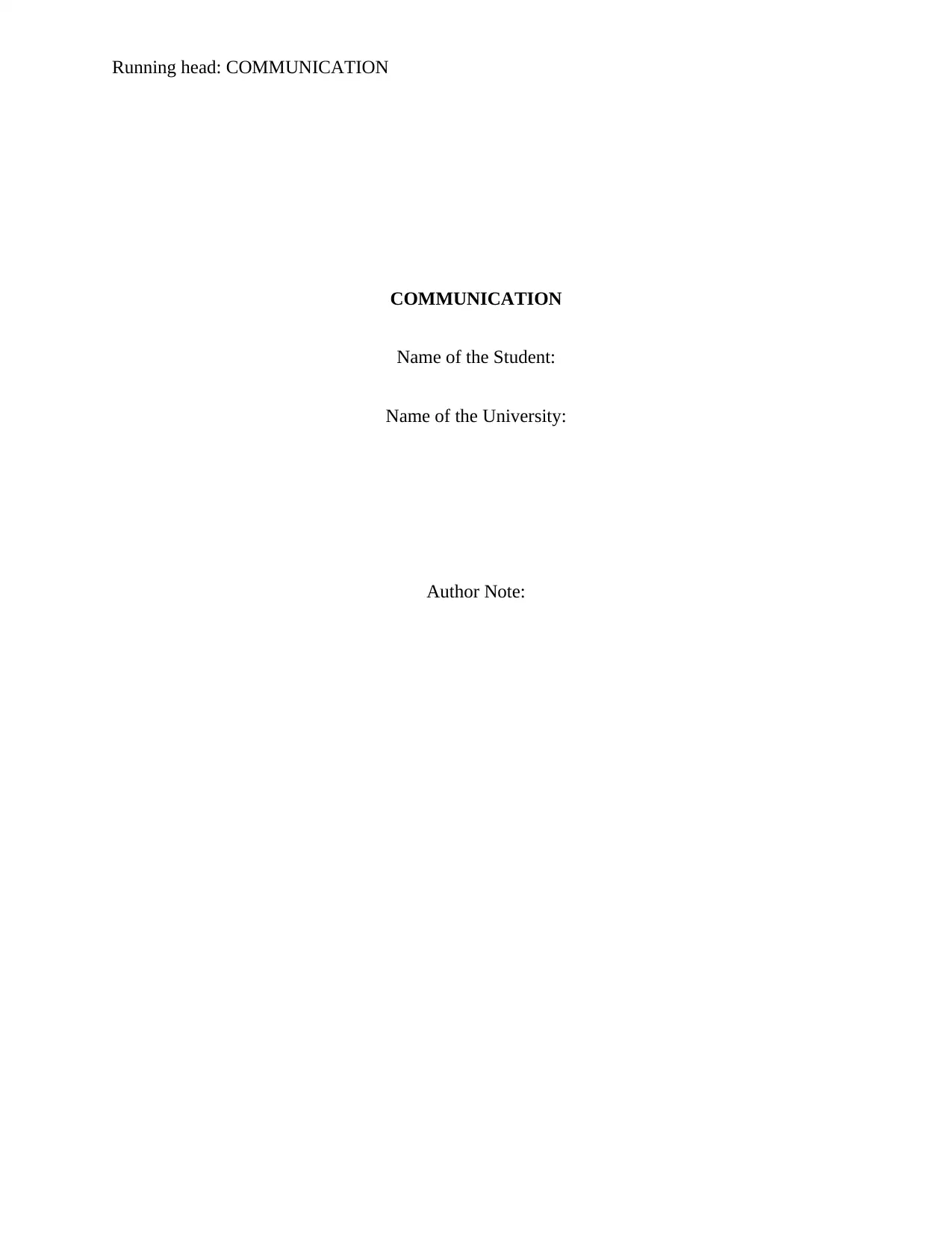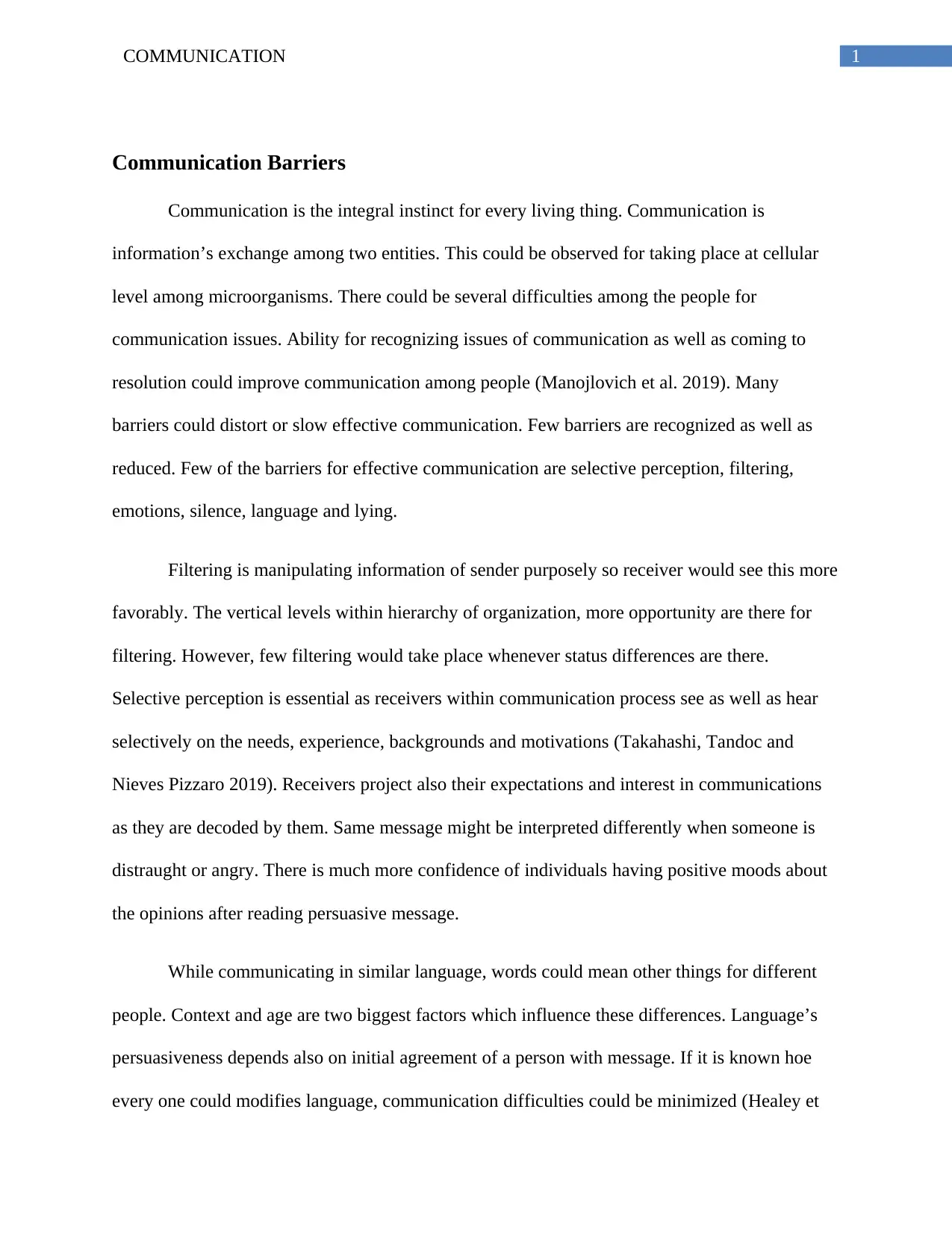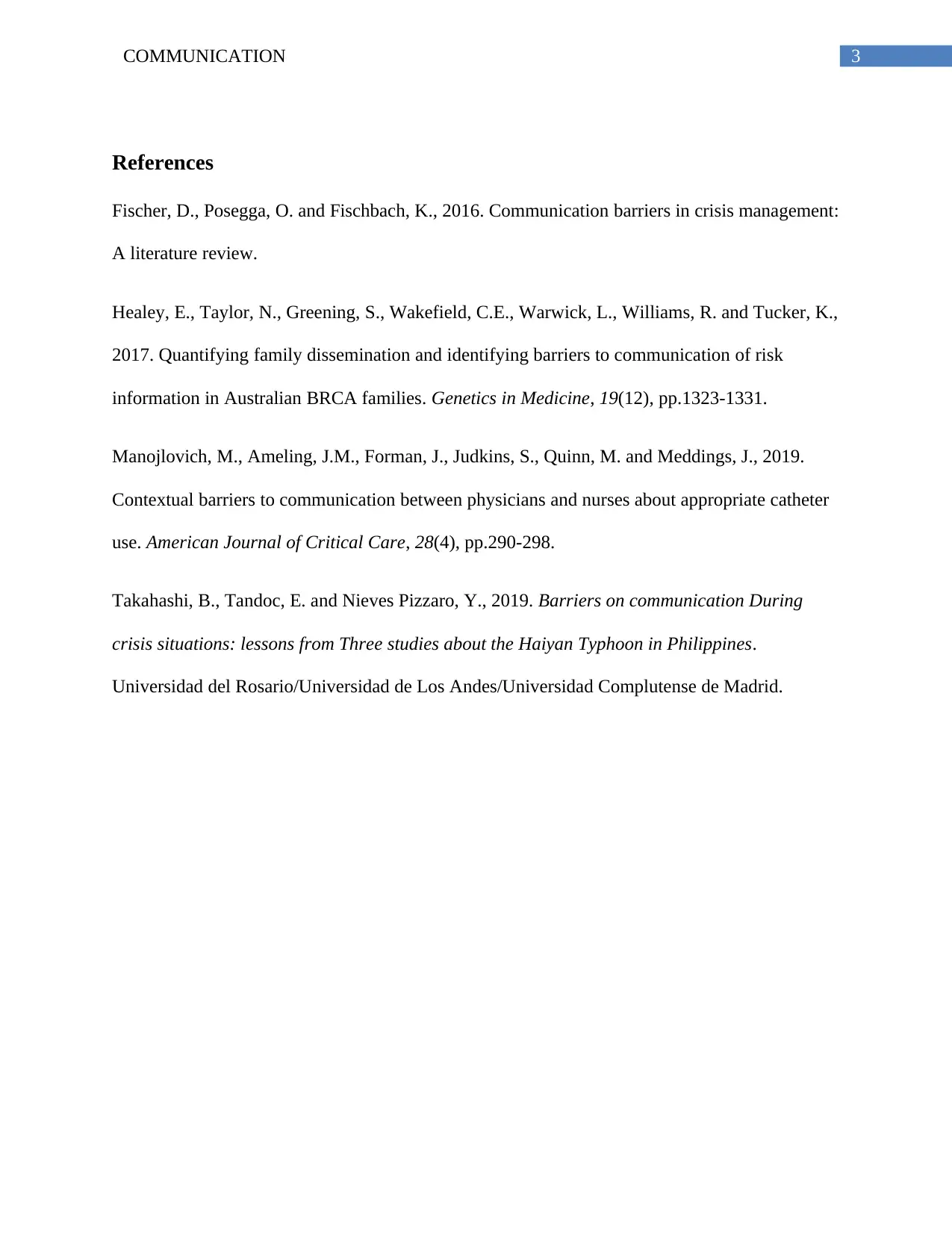MG630-146: Communication Barriers Impact on Organizations Report
VerifiedAdded on 2022/08/16
|4
|627
|18
Report
AI Summary
This report delves into the critical aspects of communication within organizational settings, addressing the functions and process of communication, including management, feedback, emotional sharing, persuasion, and information exchange. It contrasts different communication methods, such as downward, upward, and lateral communication, and explores various communication channels like oral, written, and nonverbal forms. The report identifies common barriers to effective communication, including selective perception, filtering, emotions, silence, language, and lying, providing a detailed analysis of each. It also touches upon the importance of overcoming cross-cultural communication challenges. The report draws on academic research, including studies on communication barriers in crisis management and family dissemination of risk information, to provide a comprehensive overview of the subject. The provided assignment brief covers topics from the textbook, Organizational Behavior, Chapter 11, focusing on the impact of communication on employee satisfaction and the implications for managers. The conclusion emphasizes the significance of understanding and mitigating these barriers to foster clear, accurate, and satisfactory communication within organizations.
1 out of 4





![[object Object]](/_next/static/media/star-bottom.7253800d.svg)